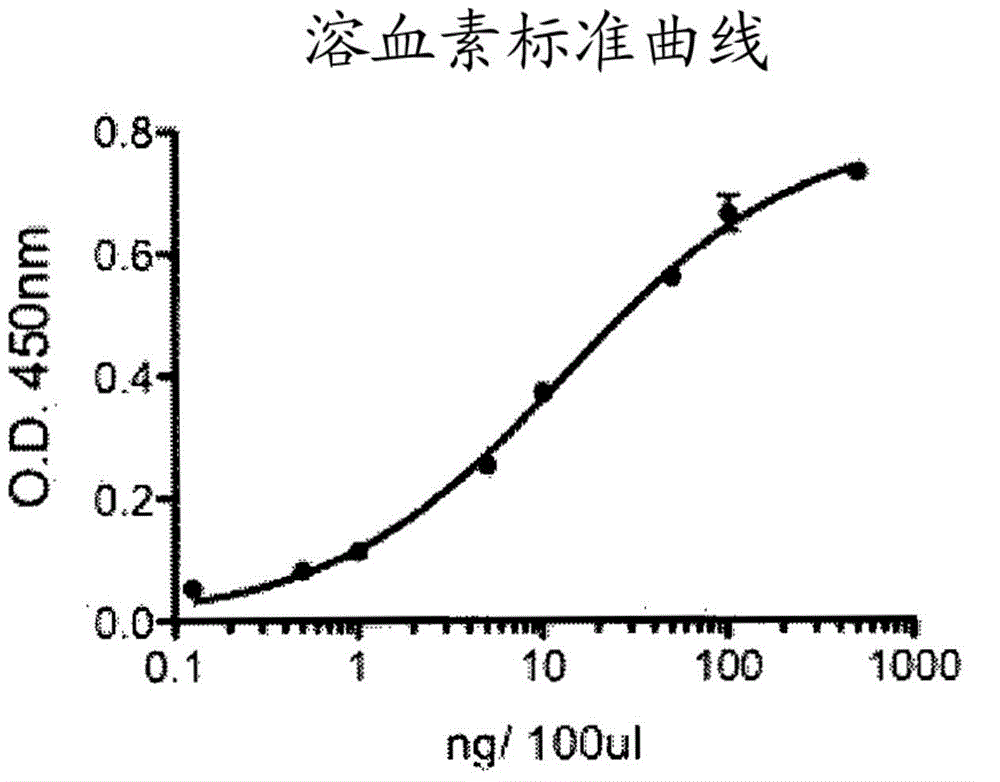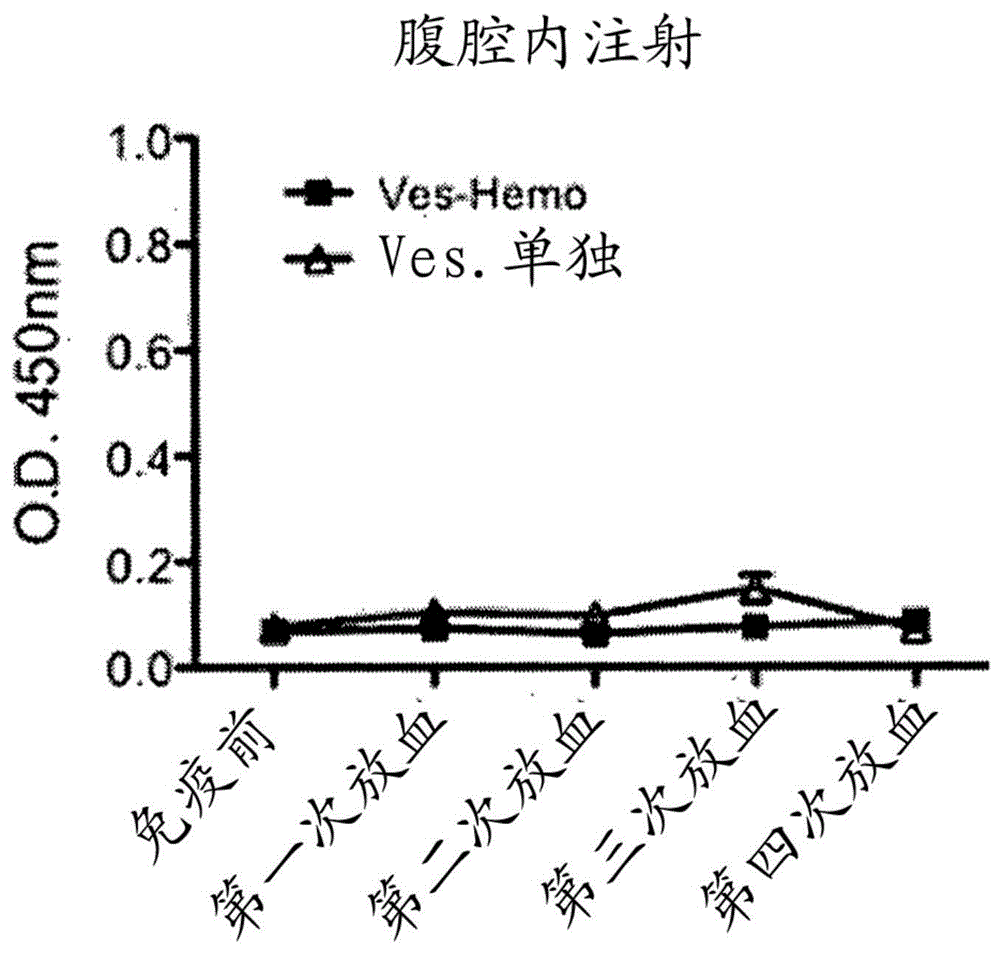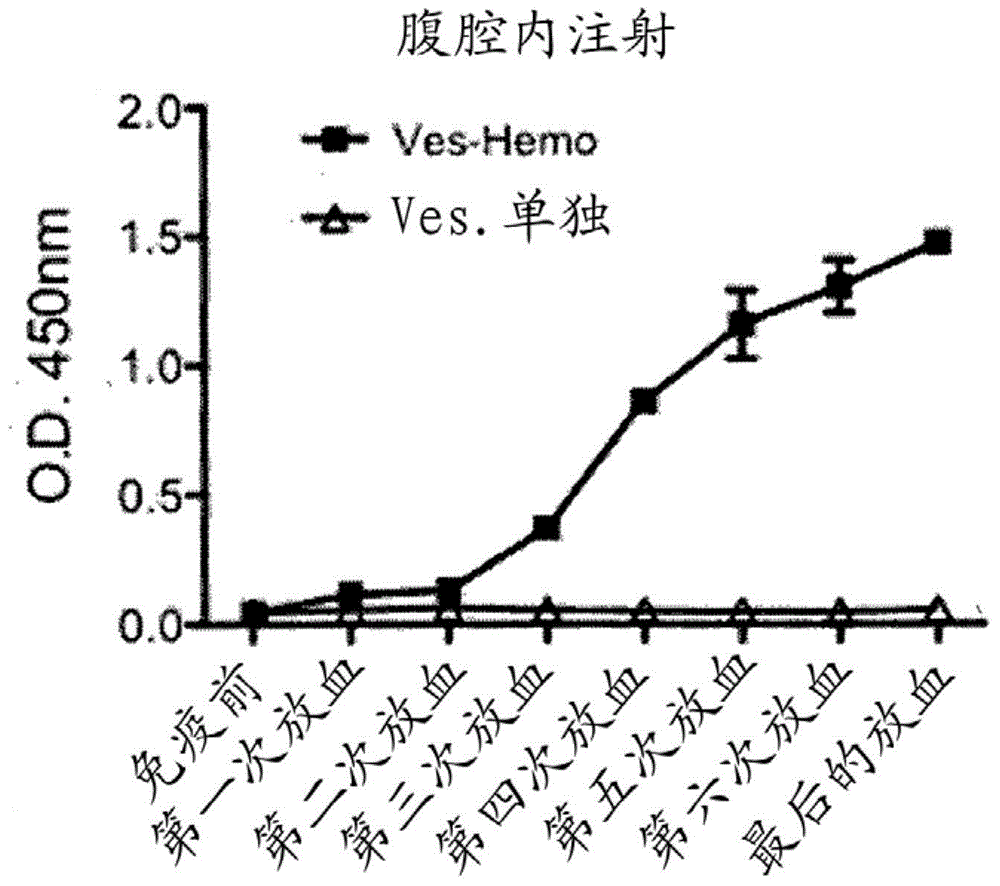Method for eliciting an immune response to an immunogen
An immune response and immunogen technology, applied in the field of eliciting immune responses to immunogens, can solve problems such as expensive, unrecognized target proteins, and lengthy
- Summary
- Abstract
- Description
- Claims
- Application Information
AI Technical Summary
Problems solved by technology
Method used
Image
Examples
Embodiment 1
[0058] A method for eliciting an immune response to α-hemolysin in mice using α-hemolysin presenting polymersomes is now described in the following paragraphs.
[0059] Materials & Methods
[0060] Poly(butadiene-b-ethylene oxide) (PBd 21 -PEO 14 ) BD21 amphiphilic block copolymer was purchased from Polymer Source (Polymer Source, Canada). α-hemolysin was from Staphylococcus aureus, 3-(N-morpholino)propanesulfonic acid (MOPS), tris(hydroxymethyl)aminomethane hydrochloride (Tris), magnesium chloride and sodium chloride were purchased from Sigma Aldrich Corporation (Singapore). Tetrahydrofuran (THF) was purchased from Tedia Corporation (Ohio, USA).
[0061] Preparation of polymersomes
[0062] Polymersomes were prepared by a membrane rehydration method. BD21 polymer was dissolved in THF and dried as a thin film on the wall of a conical bottom glass tube under nitrogen flow. The polymer film was further dried under vacuum. Subsequently, ultrapure water was added to th...
Embodiment 2
[0077] A method for eliciting an immune response in mice using hemagglutinin-presenting polymersomes is now described in the following paragraphs.
[0078] Preparation of hemagglutinin polymersomes
[0079] Polymersomes were prepared by a thin film rehydration method. BD21 polymer was dissolved in chloroform and dried into thin films. Subsequently, ultrapure water was added to rehydrate the membrane and allow the spontaneous formation of polymersomes. The resulting vesicle dispersions were then extruded with 0.45 μm and 0.22 μm membranes and dialyzed against ultrapure water to remove any residual solvent.
[0080] Recombinant hemagglutinin (HA) protein (influenza A virus H3N2 Wisconsin 67 / 05 , MyBioSource) was supplied as a sterile-filtered solution in 10 mM sodium phosphate, pH 7.4, 150 mM NaCl and 0.005% Tween-20.
[0081]HA polymersomes were formed by adding an aliquot of the HA solution to the polymersome dispersion. The mixture is then incubated to allow recombina...
PUM
 Login to View More
Login to View More Abstract
Description
Claims
Application Information
 Login to View More
Login to View More - R&D
- Intellectual Property
- Life Sciences
- Materials
- Tech Scout
- Unparalleled Data Quality
- Higher Quality Content
- 60% Fewer Hallucinations
Browse by: Latest US Patents, China's latest patents, Technical Efficacy Thesaurus, Application Domain, Technology Topic, Popular Technical Reports.
© 2025 PatSnap. All rights reserved.Legal|Privacy policy|Modern Slavery Act Transparency Statement|Sitemap|About US| Contact US: help@patsnap.com



